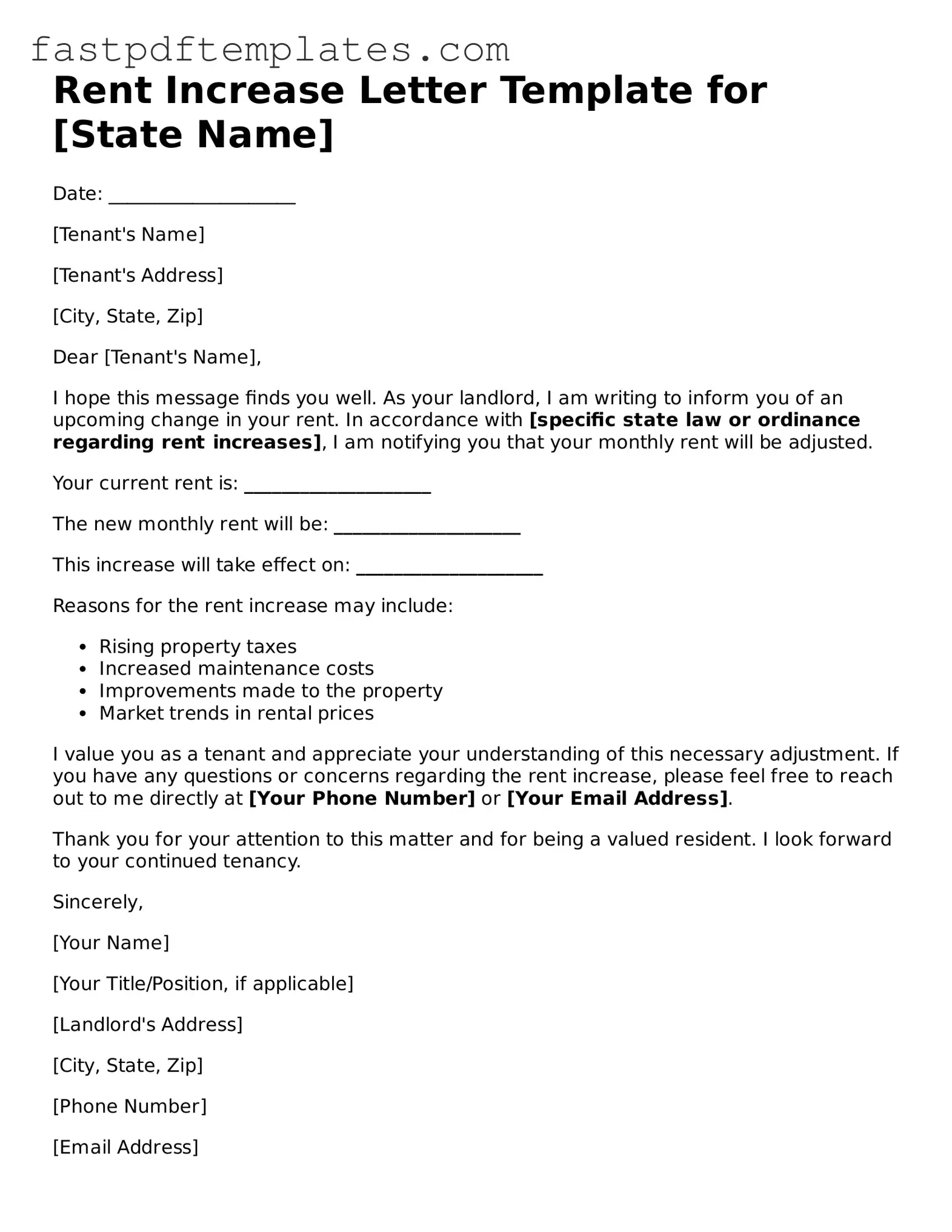Rent Increase Letter Template for [State Name]
Date: ____________________
[Tenant's Name]
[Tenant's Address]
[City, State, Zip]
Dear [Tenant's Name],
I hope this message finds you well. As your landlord, I am writing to inform you of an upcoming change in your rent. In accordance with [specific state law or ordinance regarding rent increases], I am notifying you that your monthly rent will be adjusted.
Your current rent is: ____________________
The new monthly rent will be: ____________________
This increase will take effect on: ____________________
Reasons for the rent increase may include:
- Rising property taxes
- Increased maintenance costs
- Improvements made to the property
- Market trends in rental prices
I value you as a tenant and appreciate your understanding of this necessary adjustment. If you have any questions or concerns regarding the rent increase, please feel free to reach out to me directly at [Your Phone Number] or [Your Email Address].
Thank you for your attention to this matter and for being a valued resident. I look forward to your continued tenancy.
Sincerely,
[Your Name]
[Your Title/Position, if applicable]
[Landlord's Address]
[City, State, Zip]
[Phone Number]
[Email Address]
